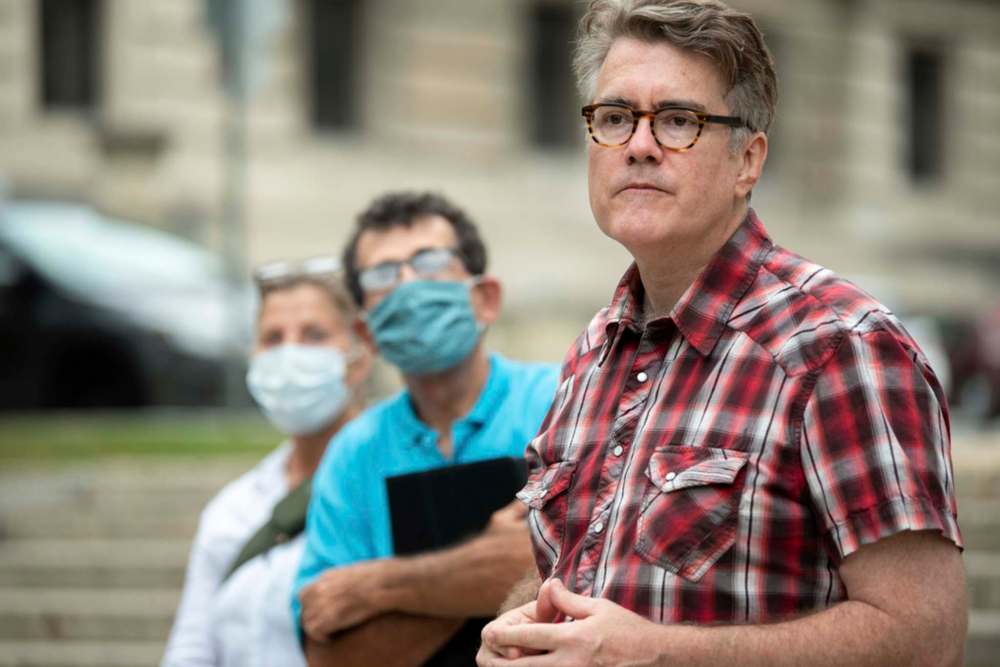Sand plant threatens drinking water, critics say
Advertisement
Read this article for free:
or
Already have an account? Log in here »
To continue reading, please subscribe:
Monthly Digital Subscription
$0 for the first 4 weeks*
- Enjoy unlimited reading on winnipegfreepress.com
- Read the E-Edition, our digital replica newspaper
- Access News Break, our award-winning app
- Play interactive puzzles
*No charge for 4 weeks then price increases to the regular rate of $19.00 plus GST every four weeks. Offer available to new and qualified returning subscribers only. Cancel any time.
Monthly Digital Subscription
$4.75/week*
- Enjoy unlimited reading on winnipegfreepress.com
- Read the E-Edition, our digital replica newspaper
- Access News Break, our award-winning app
- Play interactive puzzles
*Billed as $19 plus GST every four weeks. Cancel any time.
To continue reading, please subscribe:
Add Free Press access to your Brandon Sun subscription for only an additional
$1 for the first 4 weeks*
*Your next subscription payment will increase by $1.00 and you will be charged $16.99 plus GST for four weeks. After four weeks, your payment will increase to $23.99 plus GST every four weeks.
Read unlimited articles for free today:
or
Already have an account? Log in here »
Hey there, time traveller!
This article was published 13/08/2020 (1942 days ago), so information in it may no longer be current.
A proposed sand-processing plant 35 kilometres east of Winnipeg would threaten the drinking water of 64,000 Manitobans and needs greater scrutiny, critics say.
“It will destroy the sustainability of the aquifer,” said Dennis Le Neveu, a biophysicist and one of the area residents who joined Liberal MLAs Dougald Lamont and Jon Gerrard Thursday to voice concerns about the project.
CanWhite Sands Corp. plans to remove 3.5-million tons of sand a year from the ground, for fracking and other purposes, at its Vivian Sand Facility Project near Anola, in the RM of Springfield.

The plan is to pump sand and water up from the ground and then return the water, which LeNeveu said becomes contaminated when the pyrite in the shale hits the surface, oxidizes and turns acidic. There is a risk of contaminating the groundwater as well as the Brokenhead River and Lake Winnipeg, he said. The frack sand mining and processing might provide short-term wealth to some, but could contaminate the source of drinking water for 64,000 Manitobans, said LeNeveu, a former safety officer at Atomic Energy Canada Ltd., who has worked as a consultant in the oil industry.
The project’s environmental impact proposal, which was submitted to Manitoba Conservation, says “overall, the adverse residual effects of the proposed project are expected to be negligible to minor in magnitude and mitigable.”
The proposal warrants a Clean Environment Commission review with a public hearing and intervener status funding, said Tangi Bell, another concerned area resident who spoke to reporters Thursday.
“We wish that the minister (Sarah Guillemard) would take on this project, re-analyze it, look at it again and bring it up to the status that it deserves,” she said. The affected aquifer covers much of southeastern Manitoba. “The magnitude of it is incredible,” Bell said.
The province said Thursday it is following the environmental assessment and licensing process “and the project will be thoroughly reviewed in accordance with the Environment Act.” The public can provide feedback on the project by email to jennifer.winsor@gov.mb.ca until Aug. 25.
Gerrard urged Manitobans to do that.
“This is really pristine, tremendous, high-quality water,” Gerrard said. “We need to be very careful” with the Sandilands aquifer which is close to the size of Lake Winnipeg but underground, he said. If the project is approved without proper study, it may open the door to more sand-mining operations, he said.

“It is really critical to do (a thorough, independent review) before the first mine, so we make sure all the issues are addressed,” said Gerrard. Manitoba has a history of mine sites being abandoned and a lack of remediation, he said. In this case, however, there would be no remedy if things go bad, said Lamont.
“If you get contamination of an aquifer, you can’t send people down 200 feet to clean it up,” Lamont said. “The damage is done and it is irreparable. It would be centuries of damage to an aquifer that is absolutely colossal that people depend on for agriculture and drinking water.”
The provincial government spokesperson said a mine closure plan would be required before any operation could proceed. “As a condition of the Environment Act licence, the province also requires financial security that addresses any environmental liabilities.”
carol.sanders@freepress.mb.ca

Our newsroom depends on a growing audience of readers to power our journalism. If you are not a paid reader, please consider becoming a subscriber.
Our newsroom depends on its audience of readers to power our journalism. Thank you for your support.
History
Updated on Thursday, August 13, 2020 8:33 PM CDT: Adds photo
Updated on Tuesday, August 18, 2020 11:37 AM CDT: Corrects cutline to note the sample is shale, not soil

